
★★★☆☆
Above: Denis Wirth Miller, Gust of Wind, 1970-71, oil on canvas, 76 x 91 cm. Copyright The Estate of Denis Wirth-Miller
What was going through Denis’s mind as he waited for his friend Francis Bacon to visit his solo exhibition? Trepidation, anticipation, pride? Bacon was an artistic superstar, a fierce wit and notoriously capricious. Denis had been his friend since the 1940s and had a hand in some of Bacon’s best early works. By 1977 Denis’s profile was dwarfed by Bacon’s, and the display of his landscape paintings (in a modest East Anglian venue) was only a small affair. Knowing Bacon’s volatility, Denis must have been a little apprehensive.
Bacon arrived and toured the display with Denis before the private view. His comments were so savage and contemptuous that Denis was distraught. Humiliated and shocked, Denis took all the canvases away and destroyed them. For the four decades that remained to him, he virtually ceased painting. It appeared the artist had lost inspiration and lost heart. Bacon, the painter who had inspired him, had also crushed and extinguished the pleasure he experienced from making art.
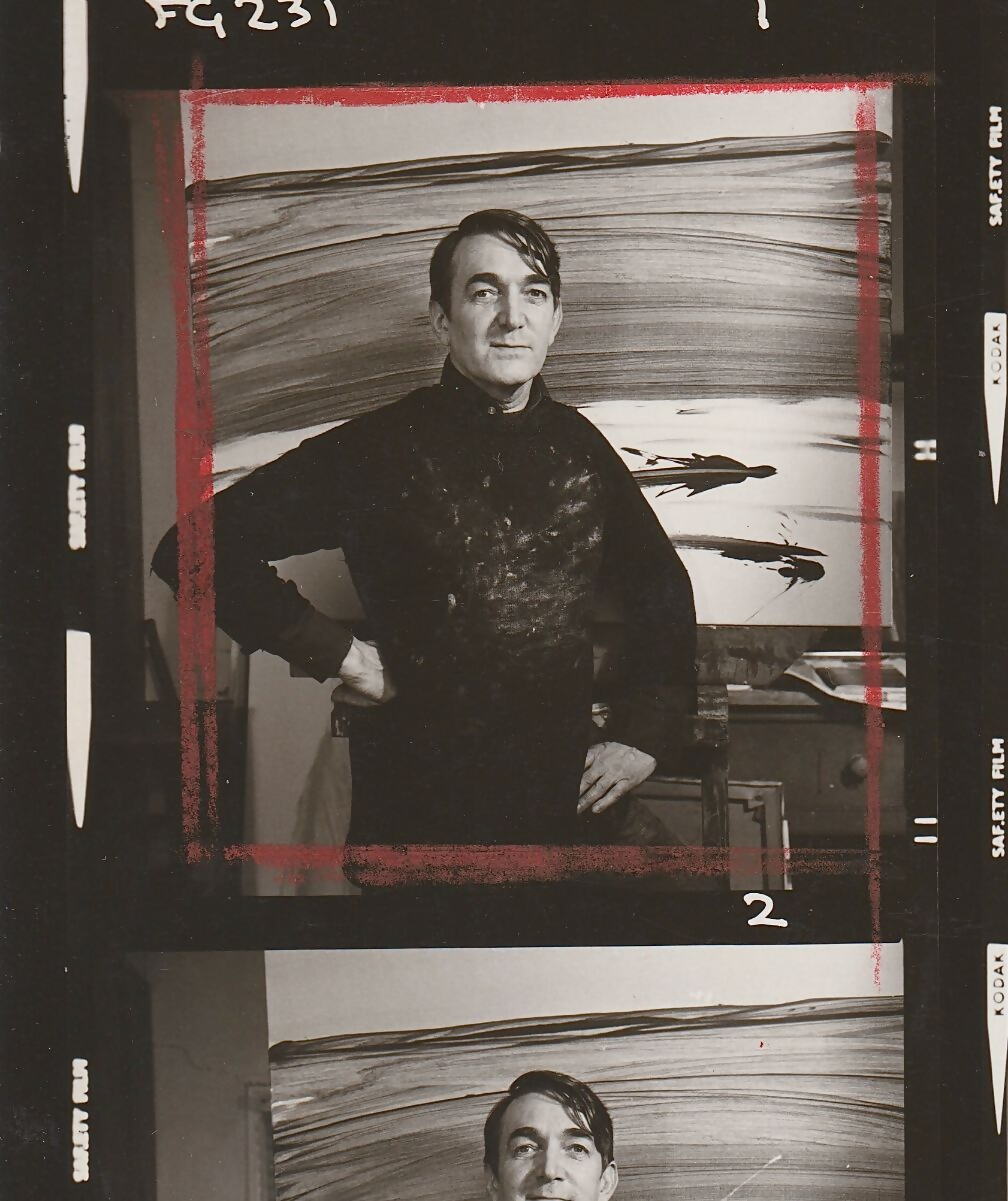
Denis Wirth-Miller by Francis Goodman. Detail from contact sheet, 1971. Copyright The Estate of Denis Wirth-Miller
From Soho to East Anglia
The extraordinary life of British painter Denis Wirth-Miller (1915-2010) is like a history of the last century. The new exhibition Denis Wirth-Miller: Landscapes and Beasts (Firstsite, Colchester, 1 October until 22 January 2023) presents the best of his art and sheds light on three remarkable men: Denis Wirth-Miller, Francis Bacon and Richard “Dickie” Chopping, Wirth-Miller’s partner.
Born in the First World War, Denis worked in textiles and window dressing before following his vocation as a painter. The exhibition includes paintings in Cubist and Neo-Romantic styles from the 1930s and 1940s when he studied alongside Lucian Freud. (They did not get on, then or later.)
During the Second World War, Wirth-Miller met Chopping, and they became lovers. Despite constant rows – often fuelled by heavy drinking – “Dickie and Denis” remained devoted to each other for the next 60 years. In 2005, they became one of the first gay couples to enter a civil partnership. Chopping was a brilliant illustrator, beloved tutor at the Royal College and sometime novelist. His covers for James Bond novels are still hailed as classics. One layout for a Bond novel jacket is exhibited here.
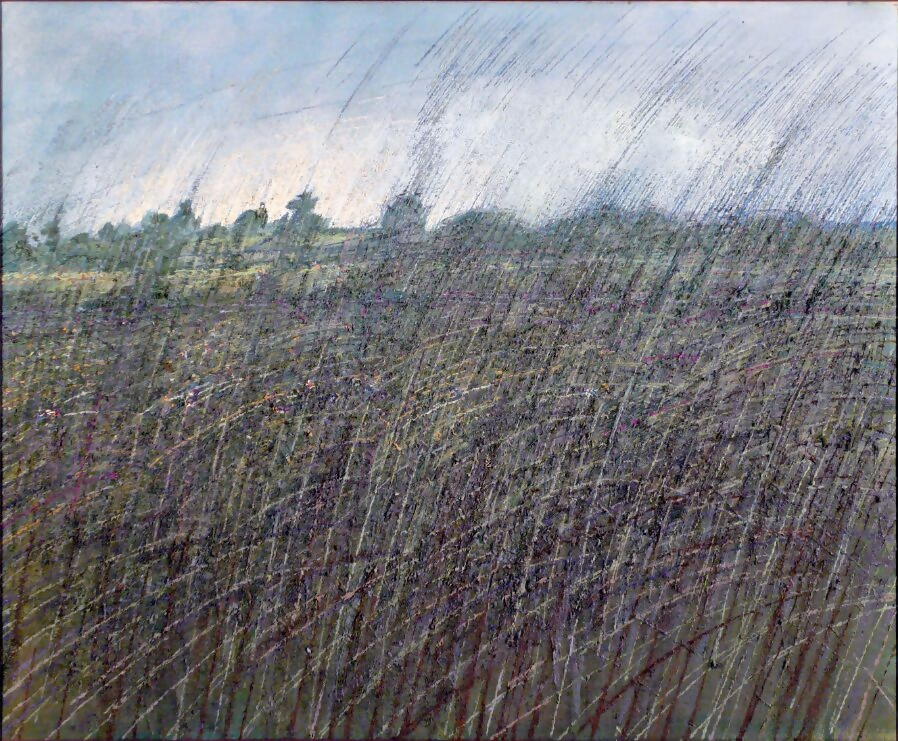
Denis Wirth Miller, Rain, 1976, 91 x 122 cm. Copyright The Estate of Denis Wirth-Miller
The couple moved to Essex to escape the frantic social life of Soho. They moved to the Storehouse, an old quayside house in Wivenhoe, which would become their long-term home. Artists, actors, authors, and socialites would travel by train to Wivenhoe’s tranquillity. Turner became heir to Chopping and Wirth-Miller’s art and archives.
Painter-partner of Bacon
Bacon and Wirth-Miller were best friends from the 1940s until Bacon died in 1992. Bacon was inspired by Eadweard Muybridge’s photographs of figures in motion, and Denis’s paintings of the time, of nude boxers and dog-walking, are close to Bacon’s style.
The pair collaborated, with Denis painting foliage in Bacon’s canvases. Wirth-Miller’s dog paintings are comprised of rough brushstrokes on dark backgrounds, causing the forms to flicker and surge out of the gloom. The animals have a raw muscular presence, and the pictures of crouching figures are animalistic, like beasts about to pounce.
The exhibition includes three Bacon paintings: the head of a screaming pope, a dog walking (from 1952) and a depiction of Van Gogh, where trees resemble Wirth-Miller’s views. That gallery shows Bacon and Wirth-Miller at their very best. Visitors will be tempted to see Bacon’s handiwork in some canvases attributed to Wirth-Miller. That’s how close the subjects and the technique are.
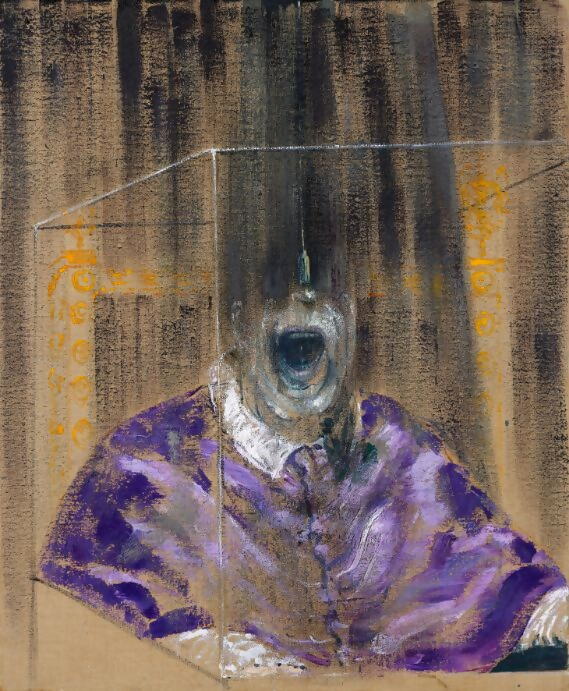
Head VI, 1949 by Francis Bacon
Wirth-Miller adulated Bacon the artist but drew away from him artistically in the 1960s, choosing to paint landscapes, while Bacon’s trajectory drew him closer to the figure. Wirth-Miller resented that his art never got more recognition than it did, though he did have good sales and even had his art bought by the Queen. Yet, if he is known today, it is as a friend of Bacon’s.
Brilliant and banal
Wirth-Miller’s landscapes are usually squarish in format, mainly of Essex and Suffolk, capturing the fenlands with level horizons and rushes. Broad stripes evoke furrowed soil, curving in slashes, brio, and tension. The thickly textured surfaces and repeated marks make paintings look like textile-wood-plaster decorative plaques from the 1950s and early 1960s. No wonder interior designers bought his landscapes for display rooms.
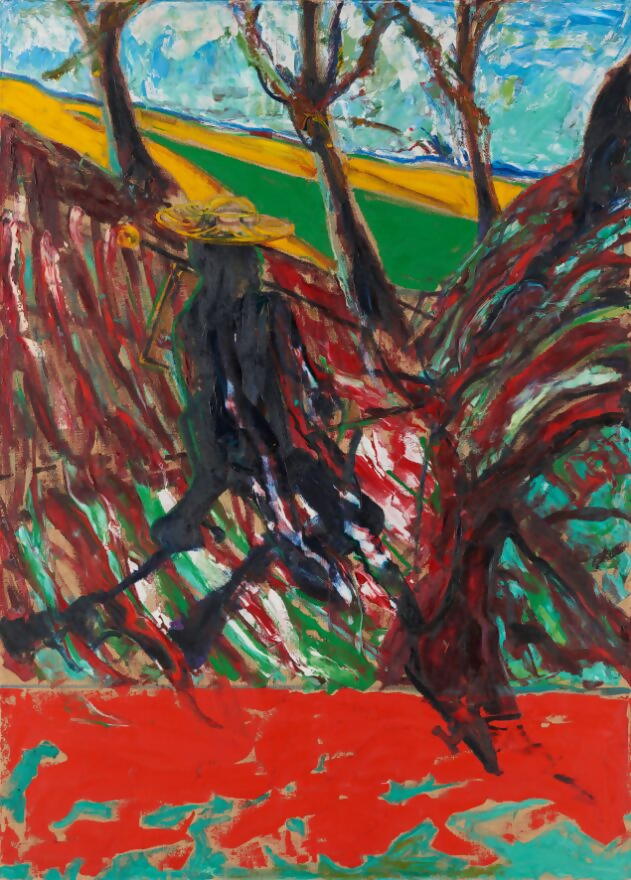
Study for Portrait of Van Gogh VI, 1957 by Francis Bacon
The best landscapes have energy and impact, but the worst verge on handicrafts, with dots of impasto (thick paint) speckling simple compositions. Unlike Chopping, who made detailed observations for his own botanical and animal illustrations, Wirth-Miller could be relatively casual and generic in nature paintings. One has trouble discerning species of trees or bushes in his landscapes. This absence of deep engagement (a degree of superficiality, maybe) prevents Wirth-Miller from being a great landscape painter.
Curator James Birch (author, collector and expert on Wirth-Miller) has been honest enough about Wirth-Miller’s limitations to include two paintings (of cows and ducks) that are lousy and lazy. These simple images of animals are flickered with diluted paint to animate them; they are painfully bland.
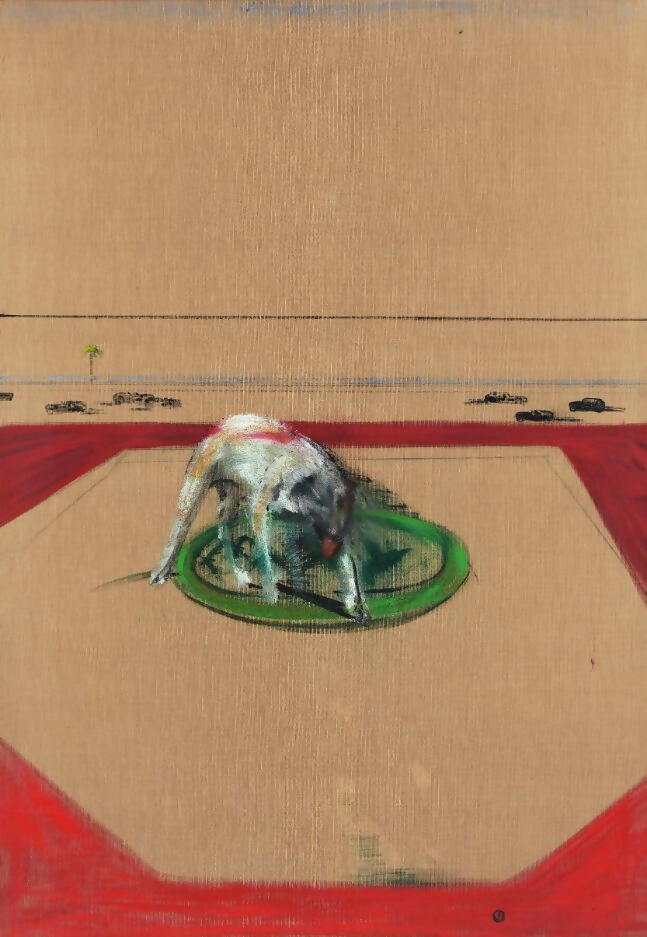
Dog, 1952 by Francis Bacon
Time for reassessment
Wirth-Miller is a skilled and occasionally dazzling painter who deserves to be appreciated more. Long ignored by London’s commercial dealers, the exhibition should see the re-emergence of Wirth-Miller as a vital collaborator with Bacon and as a painter in his own right. Firstsite should be commended for exhibiting a local artist and calling in a knowledgeable curator whose passion shines through.
Well worth a trip to Colchester or picking up the handsome catalogue.


